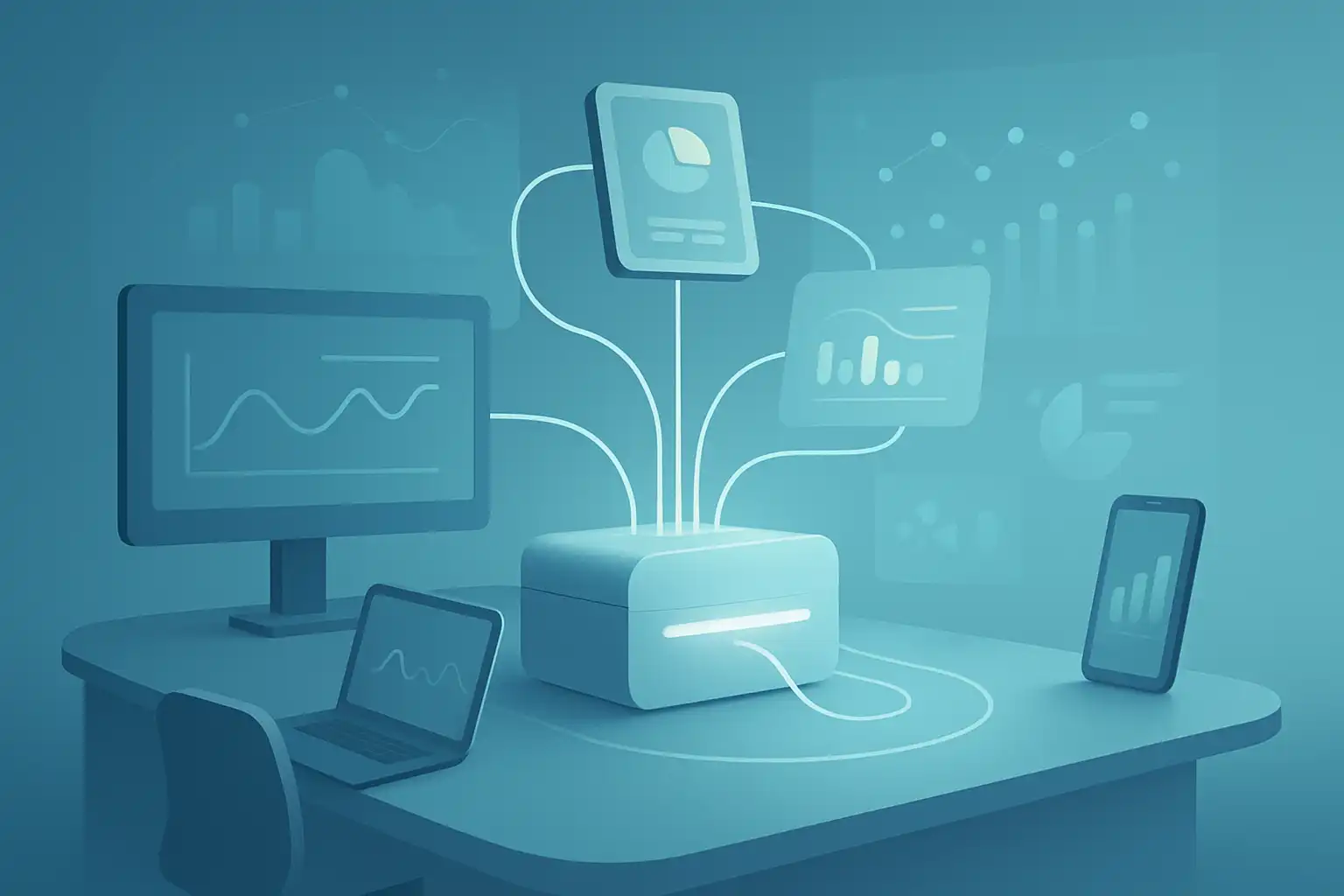
In today’s fast-moving business world, having access to accurate and timely insights is essential for making good decisions. An automated reporting system helps organizations achieve this by collecting, processing, and analyzing data with minimal human effort. Right from the start, these systems reduce manual errors and deliver reliable insights when you need them most. But how do automated reporting systems actually work, and why are they becoming the standard for modern businesses? Let’s explore how they can help you gain a clearer picture of your data and drive better results.
What Is an Automated Reporting System?
An automated reporting system is a digital tool designed to gather data from different sources, process it, and generate reports without the need for constant manual input. Unlike traditional reporting methods, which often involve time-consuming data entry and spreadsheet work, automated solutions use software to simplify the entire process. This means you get up-to-date, consistent insights without having to repeat the same tasks every day.
Commonly, automated reporting systems are used in areas like finance, marketing, sales, and operations. For instance, a marketing manager might get a daily email summarizing web traffic and campaign performance, while a finance leader could receive weekly dashboards highlighting spending and revenue trends. By reducing repetitive manual work, these tools free up your team’s time for more strategic tasks.

How Does Automation Improve Business Insights?
The main advantage of an automated reporting system lies in its ability to quickly turn raw data into actionable insights. When you automate the collection and analysis of data, you eliminate many opportunities for human error. This results in more accurate and trustworthy reports, which are essential for effective business planning and decision-making.
For example, research shows that companies using automated data analysis for decision-making are 33% more likely to report faster reaction times to market changes. When information is current, leaders can adjust their strategies in real time, avoiding missed opportunities or costly mistakes. Automation also ensures consistency, so managers trust their data instead of second-guessing the numbers.
Key Benefits of Using Automated Reporting Systems
- Accuracy: Automation minimizes mistakes that can happen during manual data entry.
- Speed: Reports are generated in minutes rather than hours or days.
- Consistency: Every report follows the same rules, reducing confusion.
- Real-time Data: Access up-to-date information as soon as it’s available, supporting timely decisions.
- Resource Savings: Free up valuable staff time for analysis, not data gathering.
What Features Should You Look for in an Automated Reporting System?
Choosing the right automated reporting system can make a big difference in your results. There are several features you should consider to ensure your solution delivers accurate, timely insights:
- Integration: The system should connect easily to your current tools and platforms, such as CRM or accounting software.
- Scalability: As your data grows, your system should scale without slowing down or losing functionality.
- User-friendly Interface: Even team members without technical skills should be able to access and use the system easily.
- Customization: The ability to set up custom reports and dashboards helps you focus on what matters most to your business.
- Data Quality Management: Features like data validation and cleaning keep your information accurate.
- Automation Scheduling: Set up recurring reports to be delivered as often as needed with no manual triggering.
- Security: Protect sensitive business data with proper access controls and encryption.
When evaluating different tools, popular brands include Microsoft Power BI, Tableau, Google Data Studio, and Zoho Analytics. Each offers different strengths, ranging from drag-and-drop dashboards to deep integration with cloud platforms.
How Can Businesses Use Automated Reporting for Growth?
Automated reports are not just about saving time—they unlock new opportunities for business growth. For instance, using real-time automated business insights, managers can spot trends before they become problems, adjust strategies on the fly, and measure the impact of new campaigns or price changes almost instantly.
Consider an e-commerce business that uses automated data analysis for decision-making. With up-to-date dashboards highlighting sales and customer behavior, the company can react faster to buying patterns, optimize inventory, or improve marketing efforts. One company saw a 20% increase in sales conversions six months after implementing an automated reporting solution. This is the power of having the right information at your fingertips.
For organizations looking to align technology with strategic goals, it’s helpful to consult resources like the data strategy alignment with business goals guide, which explains how reporting systems fit into a larger business plan.
Best Practices for Implementing Automated Reporting Systems
- Start with clear goals—know what business questions you want your reports to answer.
- Involve key users early to ensure the system meets their needs.
- Choose a solution that supports future growth and integrates with your current tech stack.
- Always test data accuracy before rolling out automated reports company-wide.
- Train staff on new workflows to encourage adoption and avoid confusion.

What Are the Potential Challenges and How Can You Overcome Them?
While the advantages of automated reporting are clear, there can be obstacles. Some common challenges include:
- Complex setup: Integrating multiple data sources can be tricky. Using custom AI software development services may help tailor the system to your unique requirements.
- Data quality issues: If source data is incomplete or inaccurate, automated systems can multiply these errors. Regular audits and validation routines can minimize risks.
- User resistance: Some employees may be wary of new technology. Providing clear training and showing the benefits can win support.
Types of Automated Reporting Systems
- Scheduled Reports: Delivered at regular intervals, such as daily sales summaries or weekly project updates.
- On-Demand Reports: Generated instantly in response to specific queries or needs.
- Alert-Based Reporting: Notifies users when metrics cross certain thresholds, like sudden drops in performance.
- Integrated CRM Automated Reporting: Pulls data from customer management tools for fast insights into sales and support trends.
How Can You Ensure Your Reporting Systems Deliver Timely Insights?
Timeliness is as important as accuracy when it comes to business insights. An automated reporting system shines when it delivers data fast enough for you to act on it. To achieve this, follow these steps:
- Choose a system that offers real-time or near-real-time processing.
- Ensure your data sources are connected and updated frequently.
- Automate scheduling so reports arrive when needed, not just when someone requests them.
- Review report delivery channels—email, dashboards, mobile notifications—and select what suits your workflow best.
- Monitor performance regularly to catch lags or data delays early.
Examples of Automated Reporting in Action
Many industries now rely on automated reporting systems for critical operations. Retailers use dashboards to respond to stock changes, healthcare organizations track patient flows in real time, and finance teams monitor spending against budgets every day. For those interested in building stronger analytics practices, the practical steps outlined in the data science workflow guide can be valuable for planning successful reporting solutions.
FAQ: Automated Reporting Systems
- How does an automated reporting system improve decision-making?
By providing fast and accurate insights from fresh data, automated reporting allows leaders to make informed decisions without second-guessing numbers or waiting for manual reports. - Can automated reporting systems work with older software tools?
Most modern reporting systems offer integrations or APIs that connect with existing platforms, though some legacy software may need extra support or custom connectors. - Is it expensive to set up an automated reporting system?
Costs vary depending on scale and complexity, but even small businesses can find affordable options. Cloud-based tools reduce the need for expensive hardware or long-term contracts. - What types of businesses benefit most?
Any business that relies on timely, accurate data can benefit, including retail, finance, marketing, healthcare, and manufacturing.
Adopting an automated reporting system is a smart step toward better, faster business insights. By reducing manual work and delivering fresh data, these systems empower your team to focus on what matters most—making confident decisions that drive growth.
